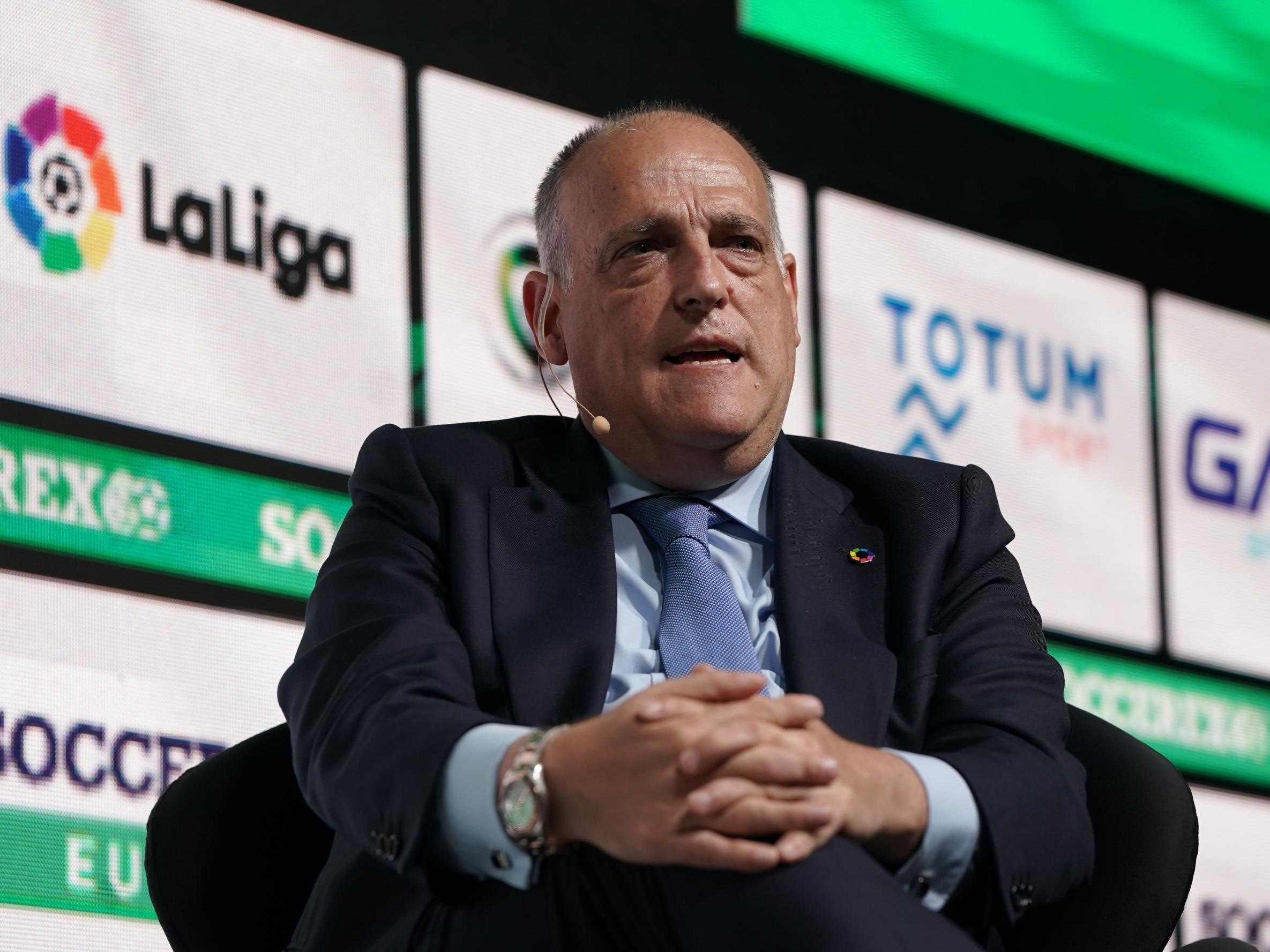Premier League return: Plans in place to get supporters back in stadiums as soon as possible
Fans around England could be back in stands sooner than expected, though full capacities may not be achieved until 2021

Your support helps us to tell the story
From reproductive rights to climate change to Big Tech, The Independent is on the ground when the story is developing. Whether it's investigating the financials of Elon Musk's pro-Trump PAC or producing our latest documentary, 'The A Word', which shines a light on the American women fighting for reproductive rights, we know how important it is to parse out the facts from the messaging.
At such a critical moment in US history, we need reporters on the ground. Your donation allows us to keep sending journalists to speak to both sides of the story.
The Independent is trusted by Americans across the entire political spectrum. And unlike many other quality news outlets, we choose not to lock Americans out of our reporting and analysis with paywalls. We believe quality journalism should be available to everyone, paid for by those who can afford it.
Your support makes all the difference.The Department of Digital, Culture, Media and Sport (DCMS) is tentatively aiming to have supporters back in stadiums in the autumn, with a series of plans being drawn up already.
That should offer some solace to many lower-league clubs, because not everyone has been able to share the delight about the Premier League’s Project Restart.
“Leagues like the Premier League coming back will make a difference, even to us,” a source at a League One club says. “But we can’t really get going until we have fans. It’s too large a part of our revenue. It makes it impossible.”
As Ronan Evain of Football Supporters Europe says, it is an issue that still requires a lot of work. It is also crucial to the overall structure of the game beyond the elite, as well as the reason they all exist in the first place: the fans; the lifeblood.
Football without supporters may not quite be nothing, given the need of clubs to firstly just survive, but it certainly can’t become all we know. The game does need to get supporters back in as soon as possible, for moral reasons as much as logistical and financial.
The European Leagues body – who represent all the domestic competitions and were seen as crucial in sharing information to get almost all of the continent back on track – have set up a working group on the issue. Much like with the lower tiers in England, this is primarily driven by the fact the majority of domestic competitions don’t have the mega broadcasting deals the major leagues do, and need those supporters in. The European Leagues have thereby been consulting with Football Supporters Europe – which involves the English Football Supporters’ Association – and executive director Evain is increasingly optimistic about the situation.
“We exchange ideas and will work closely together on this in the coming weeks,” Evain says. “I think for a lot of leagues it’s a matter for the kick-off of the next season, rather than this season.
“We have reason to be optimistic now. That would probably have been different two or three weeks ago.
“I think we’ve all learned to be patient through this crisis, and the message has been: ‘Take your time, there’s no rush, health and safety first.’ Nevertheless, things are evolving pretty quickly.
“Some have decided to return as early as possible, like Hungary, Poland and Russia, with very reduced attendances. My feeling is, in some of the big leagues, the tendency is more to wait until more people are possible in the stadium, and that will be part of the solution for what’s next in terms of making the measures acceptable to everyone.

“The discussion has started. It’s happening in various countries, active discussions on what the protocols might be.”
Those discussions have offered the foundation for many of the ideas that some of the bigger leagues are going to try – all of course involving considerable social distancing.
Javier Tebas has already floated the plan of stadiums being 30 percent full by autumn, 50 percent full by winter, and without restrictions from January 2021. Bayern Munich have meanwhile been talking about trying to get 10,000 in. The Italian federation has announced it will look at similar plans.
“It’s unthinkable that in a stadium that can hold 60,000 there’s not space for a small percentage of fans with the necessary precautions,” president Gabriele Gravina said.
Most immediately, and most instructively, the Polish league are to allow 25 percent of stadium capacities to be filled from 19 June.
This could well shape decisions elsewhere, although not as much as the development of the Coronavirus crisis itself.
That is one obvious reason why England lags behind.
Sources at several clubs say it is “far too soon”, and still too sensitive an issue given it is only a week since players like Troy Deeney and N’Golo Kante were expressing reservations about returning, not to mention the country’s high death toll.
More and more of those sources, however, echo Evain in saying that fans could be back “much sooner than had been originally predicted”.
This reflects the words of Premier League chief executive Richard Masters last week.
“There is optimism that we will see fans back in the stadiums next season and it may happen on a phased basis,” Masters said.
This is what guides the DCMS’ thinking.

The clubs are going to be led by the Premier League and EFL on this, who are in turn working with Public Health England. That will dictate all. That hasn’t stopped individual clubs starting to investigate options, though.
The Independent has been told of some who have started to do calculations and feasibility studies, and want to get at least some season season-ticket holders in. Others have had very tentative conversations about what that might look like, and even mentioned catering options.
That points to how some of it, by the time it gets that far, could come down to basic cost. Allowing a certain number of fans in will require policing, security and hospitality staff. Many clubs will have decisions to make. It could have a bigger influence on the lower leagues.
For the moment, many of those in the bottom two divisions have been trying to come up with more inventive solutions. Streaming on the EFL platform has been considered, while charging subscribers. The hopeful view is it won’t be needed for very long.
“I don’t want to be overwhelmingly optimistic,” Evain says. “The work being done at the moment is more focused on next season than the remaining games. There are obviously a lot of questions, like whether social distancing necessary in standing sections – where it’s obviously more complicated – or what it means for the at-risk population, how clubs and authorities can put in place protocols that would allow them to return safely to the stadiums.
“I haven’t heard of a miracle solution yet, to return everybody back at once, but it’s a joint work by everyone in the game.”
That will hopefully eventually restore total delight in full stands.
Join our commenting forum
Join thought-provoking conversations, follow other Independent readers and see their replies
Comments